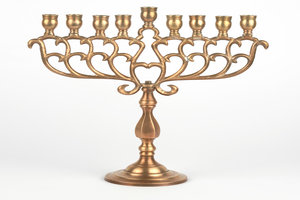Last week, in WILDERNESS INSTRUCTIONS, Part 11, we saw that the 4-fold covering to the tabernacle is a reminder to us of Jesus Christ, who came as a humble servant, who is the head of His flock, who took the punishment for our sins, and thus, covered all of our sin. When we accept His sacrifice, we are then brought under that covering, our sins are removed from us, and we are seen as “white as snow”. Only then can we fully experience being under the “shadow of His wings”, that we can fully experience His protection, His comfort.
Today’s lesson takes us to the actual frame of the Tabernacle: The boards designed to hold up the coverings:
“And for the tabernacle you shall make the boards of acacia wood, standing upright. Ten cubits shall be the length of a board, and a cubit and a half shall be the width of each board. Two tenons shall be in each board for binding one to another. Thus you shall make for all the boards of the tabernacle.” (Ex. 26:15-17 NKJV)
The frame, then, was to be made of Acacia wood, which we saw in earlier lessons is a hard wood, found in abundance in the Sinai Peninsula, which is particularly hardy against insects. Thus, as we saw in Wilderness Instructions, Part 3, this can be symbolic that our heart-temples aren’t something that can be eaten away. They will stand the test of time.
The specific height and width of each board is given, and we can note that each one was to be approximately 15 feet (4.5 metres) tall, and 2.2 feet (.7 metres) wide. Basically they were long and thin. God then specifies how many boards would make up each side of the tabernacle: Twenty on the north and south sides, and six on the westward side (See Exodus 26:18, 20 and 22).
Why not just one board?
Let’s remember that the tabernacle in the wilderness was meant to be a portable structure. The fact that the walls were made up of individual boards must have gone a long ways towards facilitating the transport of the tabernacle!
God also specifies how the boards will be held upright: “You shall make forty sockets of silver under the twenty boards: two sockets under each of the boards for its two tenons…” (Ex 26:19).
God even specifies how the corners will be reinforced: “And you shall also make two boards for the two back corners of the tabernacle. They shall be coupled together at the bottom and they shall be coupled together at the top by one ring. Thus it shall be for both of them. They shall be for the two corners. So there shall be eight boards with their sockets of silver—sixteen sockets—two sockets under each board.” (Ex. 26:23-25)
And finally, God gives instructions for the support of the roof as well: “And you shall make bars of acacia wood: five for the boards on one side of the tabernacle, five bars for the boards on the other side of the tabernacle, and five bars for the boards of the side of the tabernacle, for the far side westward. The middle bar shall pass through the midst of the boards from end to end.” (Ex. 26:26-28)
All of these boards were to be overlaid with gold: “You shall overlay the boards with gold, make their rings of gold as holders for the bars, and overlay the bars with gold.” (Ex. 26:29). We saw in Wilderness Instructions, Part 3 that the gold overlay on the acacia wood was to help us remember that our heart-temples should be the most precious things we can possibly imagine in our lives. But just what is the purpose of this elaborate framework?
The obvious purpose would be one of support. The tabernacle needed to have a framework, something to hold up the symbolic coverings, the symbolic veil, something to house the symbolic furniture. Without this framework, there would be no tabernacle, nothing for the priests to serve in, nowhere for the curtains to hang.
We must remember that these golden boards, held together by the golden bards and resting in their silver sockets, sustained the weight of the curtains and coverings. We saw last week that the curtains and the veil all give us a picture of Jesus, and we know that on Jesus was hung all the weight of sin, the weight of the universe (See 1 Peter 2:24). The boards, then, represent the person of Christ. They represent how He gave up everything to die a cruel death for us, that we might be saved, and upon that one Sacrifice, the future of mankind was hung.
And what does this mean for our heart-temples?
Just this: when we read about the elaborate framework for the tabernacle in the wilderness, let it be a reminder to us that Jesus’ gift on the cross has formed the framework upon which hangs every hope of salvation, every hope of freedom from the dominion of darkness and sin. Let’s think of this framework in the tabernacle, and let’s remember that Jesus is the reason our heart-temples exist and maintain their form!
And that completes the instructions given for the construction of the tabernacle and its furniture. But God’s instructions don’t stop here. He goes on to give instructions about the courtyard surrounding the tabernacle. Does this courtyard also have significance for our heart-temples? Join us next week and find out: Wilderness Instructions, Part 13: Make a Courtyard for the Tabernacle…
In His love,
Lyn
Lyn Chaffart, Speech-Language Pathologist, mother of two teens, Author and Moderator for The Nugget, a tri-weekly internet newsletter, and Scriptural Nuggets, a website devoted to Christian devotionals and inspirational poems, with Answers2Prayer Ministries.
* http://www.pbministries.org/books/pink/Gleanings_Exodus/exodus_42.htm
** Archaeological Study Bible, Copyright 2005 by the Zondervan Corporation, p. 153, The Tabernacle and the Ark and p. 133, Commentary on Vs. 25:37.
(To access the entire “Wilderness Instructions” mini-series, please click here.)

